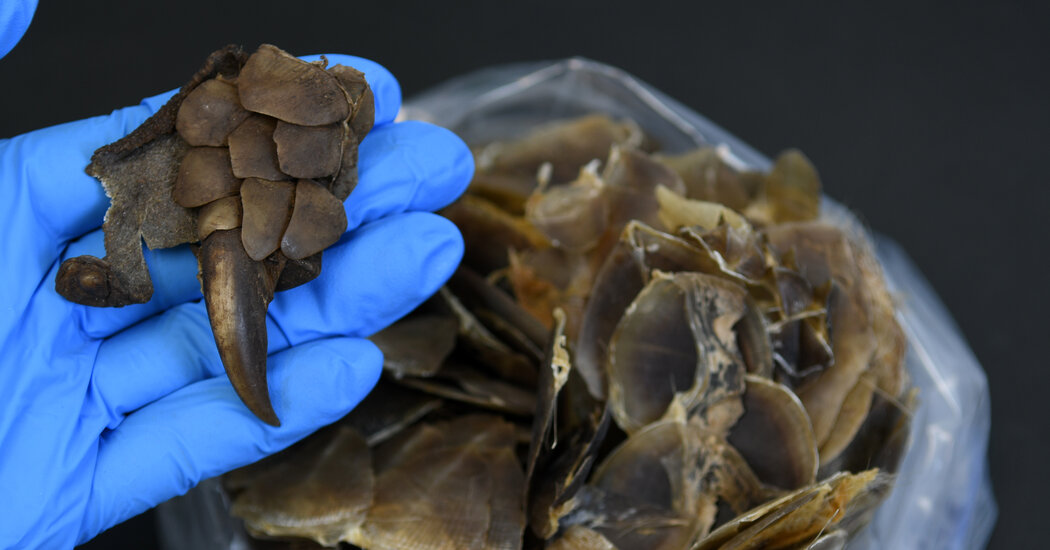The pangolin is an absurd animal, a mammal dressed up as a reptile with scales, sharp claws and sticky saliva. Wildlife experts often say they are the world’s most trafficked mammal, as poachers target pangolins for meat and their scales, which are used in traditional medicine. There are eight species, all with different levels of danger.
Or, sorry, make them nine kinds. The researchers determined that the scales seized in Hong Kong in 2012 and 2013 and in Yunnan, China in 2015 and 2019 belong to a previously unrecognized species of pangolin that has not yet been formally described but is hiding in plain sight. The finding was published Monday in the journal Proceedings of the National Academy of Sciences.
The amount of data gathered from these very limited samples is extraordinarily impressive, said Matthew Shirley, a conservation biologist at Florida International University and chair of the IUCN SSC Pangolin Specialist Group, who was not involved in the study.
To determine whether the scales belonged to a new species, the researchers analyzed the genomes taken from 17 confiscated pangolin scales and compared them to 138 genomes from eight known species. They also examined the shape and structure of 33 captured scales and found features similar to Asian pangolins, suggesting that the mysterious animals belong to Manis, a group of animals found in Asia, rather than Phataginus or Smutsia, the two groups found. Africa. Genome data confirmed the family ties, and the researchers named the new species Manis mysteria.
Although scientists have yet to find and formally describe the ninth pangolin, that doesn’t mean no one knew it existed. It will probably be caught and called the Sunda pangolin or something like that, Dr. Shirley said, referring to Manis javanica. This makes M. mysteria an example of cryptic diversity, where unique evolutionary lineages are difficult to recognize because they look similar to already known species. The researchers noted that they were unable to distinguish M. mysteria from other Asian pangolins by scales alone.
It turned out that the confiscated scales were from seven M. mysteria individuals. Using their genomes, the researchers were able to estimate that armadillos diverged from other pangolin species more than five million years ago, said Hua-Rong Zhang, a conservation geneticist at Hong Kong’s Kadoorie Farm and Botanical Garden and an author of the paper.
Dr. Zhang and his colleagues hope to find the new species in the wild next, but also notes that given its physical similarity to other pangolins in Asia, it is possible that a specimen of this new species is already being held in a museum. or natural history collection.
Pooling the genetic diversity of pangolins is essential to stopping their poaching. Dr Shirley said that to find out where the illegally trafficked scales come from and which pangolin species are most at risk from poaching, authorities need a robust reference database that matches pangolin genetics to geographic locations. Dr. Zhang plans to continue working with Li Yu, a biologist at Yunnan University in China and the paper’s author, to develop forensic tools to help inform law enforcement and pangolin conservation.
Ending the illegal pangolin trade does not simply require collaboration between scientists and law enforcement. Perhaps intuitively, people who buy pangolins need to be brought in as well. Dr Shirley said it was pointless to try to swim upstream with the demands of millions and millions of people. He added that instead of demonizing the traditional use of pangolins because it goes against Western values, you need to find a way to involve these consumers as important stakeholders in the sustainability of the species.
#mysterious #species #discovered #scales #pangolin #caught #trade
Image Source : www.nytimes.com

